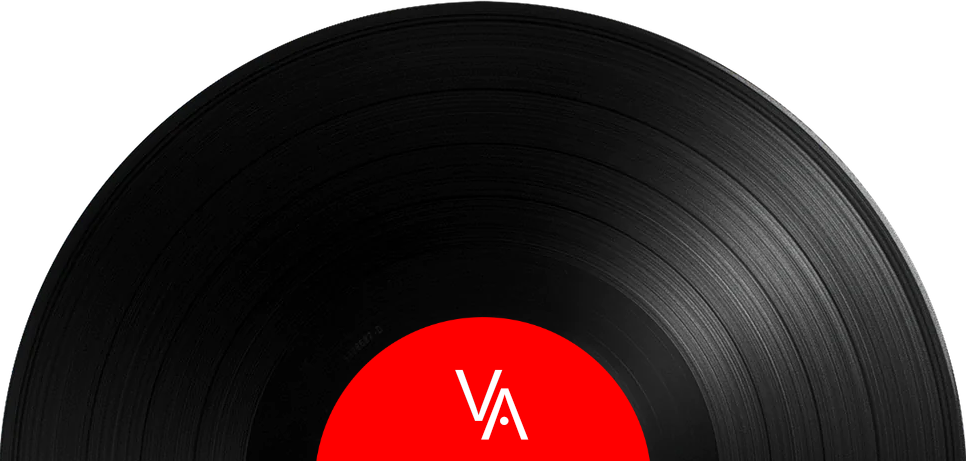
During his final few months in the Army, while he looked forward to his discharge from service, Elvis - who had been drafted in 1957 and stationed in Germany - started to experiment with new material, thinking ahead to his return to the recording studio. Under consideration were The Four Fellow's Soldier Boy, the Golden Gate Quartet's I Will Be Home Again, The Drifters' Such a Night and Jesse Stone's Like a Baby. His army friend, Charlie Hodge, taught him techniques to improve his breathing and expand his range, and by the end of his stint in Germany Elvis had added a full octave to his vocal range.
Elvis Is Back! is the fourth studio album by Presley. Released in April, 1960, it was his first stereo record. Everything previously had been released in mono only. This record was recorded in only two sessions and it was his first recording session after his discharge from the army. He had not recorded any new material since his 1957 Christmas album, so his fans were eager for another slab of fresh Presley. Some previously recorded place holders had been issued throughout Presley's army days by RCA Victor, but that was just to keep the fire burning while he was away. Now Elvis was biting at the bit to get back to recording new material, and immediately upon his return to the States, on March 2, 1960, he reunited with The Blue Moon Boys, all except for bassist Bill Black, who declined to participate as he was then enjoying some success with the Bill Black Combo. In hindsight …
The band got together on March 20, when Colonel Tom Parker, Presley's manager, sent a chartered Greyhound bus to transport the entourage from Memphis to Nashville to start recording at RCA's studio. The session personnel consisted of guitarist Scotty Moore, drummer D.J. Fontana, pianist Floyd Cramer, guitarist Hank Garland, bassist Bobby Moore, percussionist Buddy Harman and the amazing backing group The Jordanaires.
Elvis Is Back! topped the UK albums chart and reached number two on the Billboard chart. Initially, the record received mixed reviews, but over time its critical reception became more positive and it was finally certified gold on July 15, 1999 - a long time, to say the least, especially for the King of Rock n' Roll! The first single from the album, Stuck on You, was released two days after its recording with Fame and Fortune on the B-side. The printed sleeve read, "Elvis' 1st New Recording For His 50,000,000 Fans All Over The World," and it was the first Presley single to be released in stereo.
While Presley was in Germany, Parker negotiated new terms with RCA Victor to fulfill Presley's contractual obligations with film soundtracks. He also negotiated an increase in Presley's salary and an appearance on The Frank Sinatra Show.
Elvis Is Back! represented a new direction for the young singer, which he would embrace and pursue over the rest of the decade. Featuring rock, R&B, blues and ballads, this new sound heralded a "growing up" of sorts from the pre-army heartthrob to the post-war, mature singer. Critics seemed to agree and said his interpretations were increasingly sophisticated. Presley and the session's musicians, known as "The Nashville A-Team", also had the benefit of recording equipment that was state-of-the-art for its time.
There are twelve tracks in total on Elvis Is Back! Opening with an upbeat rocker, Make Me Know It, the groove slows right down for an amazing interpretation of Fever, first made famous by Peggy Lee, which sent chills down my spine the first time I heard it. The rest of the record is just as good, and the stellar musicianship of the A-Team fits right in with Presley's singing. This record is tight. The songs sound - on this DCC Compact Classic pressing - better than I have heard them anywhere else. I used to have the 60s Masters box set, but the songs on this recording far exceed versions found in that box. There is much more warmth and space - there really is - and the vinyl is of much better quality and also much quieter. This record - this pressing of this record - is that good. If you're a Presley fan and you can find one, snag it. Don't think twice, it's alright.
The album was also released in mono, and while critics did eventually warm to it there were some critical notices initially. Billboard magazine raved about it and said, "Elvis is back and singing better than ever in the rock and roll style he made famous," while the New York Times called the record "drab and lacklustre". Hi-Fi Stereo Review magazine called the change in Presley's style "musically schizoid," while at the same time deeming the overall recording "good".
In the end, 60-plus years on, this record rocks! And this pressing - overseen by Steve Hoffman and Kevin Grey - beats all others. I'm calling it a must have because it actually makes Elvis Presley sound better than you've ever heard him sound.
If you yearn to hear Elvis sound better than you ever have, this is …
During his final few months in the Army, while he looked forward to his discharge from service, Elvis - who had been drafted in 1957 and stationed in Germany - started to experiment with new material, thinking ahead to his return to the recording studio. Under consideration were The Four Fellow's Soldier Boy, the Golden Gate Quartet's I Will Be Home Again, The Drifters' Such a Night and Jesse Stone's Like a Baby. His army friend, Charlie Hodge, taught him techniques to improve his breathing and expand his range, and by the end of his stint in Germany Elvis had added a full octave to his vocal range.
Elvis Is Back! is the fourth studio album by Presley. Released in April, 1960, it was his first stereo record. Everything previously had been released in mono only. This record was recorded in only two sessions and it was his first recording session after his discharge from the army. He had not recorded any new material since his 1957 Christmas album, so his fans were eager for another slab of fresh Presley. Some previously recorded place holders had been issued throughout Presley's army days by RCA Victor, but that was just to keep the fire burning while he was away. Now Elvis was biting at the bit to get back to recording new material, and immediately upon his return to the States, on March 2, 1960, he reunited with The Blue Moon Boys, all except for bassist Bill Black, who declined to participate as he was then enjoying some success with the Bill Black Combo. In hindsight …
The band got together on March 20, when Colonel Tom Parker, Presley's manager, sent a chartered Greyhound bus to transport the entourage from Memphis to Nashville to start recording at RCA's studio. The session personnel consisted of guitarist Scotty Moore, drummer D.J. Fontana, pianist Floyd Cramer, guitarist Hank Garland, bassist Bobby Moore, percussionist Buddy Harman and the amazing backing group The Jordanaires.
Elvis Is Back! topped the UK albums chart and reached number two on the Billboard chart. Initially, the record received mixed reviews, but over time its critical reception became more positive and it was finally certified gold on July 15, 1999 - a long time, to say the least, especially for the King of Rock n' Roll! The first single from the album, Stuck on You, was released two days after its recording with Fame and Fortune on the B-side. The printed sleeve read, "Elvis' 1st New Recording For His 50,000,000 Fans All Over The World," and it was the first Presley single to be released in stereo.
While Presley was in Germany, Parker negotiated new terms with RCA Victor to fulfill Presley's contractual obligations with film soundtracks. He also negotiated an increase in Presley's salary and an appearance on The Frank Sinatra Show.
Elvis Is Back! represented a new direction for the young singer, which he would embrace and pursue over the rest of the decade. Featuring rock, R&B, blues and ballads, this new sound heralded a "growing up" of sorts from the pre-army heartthrob to the post-war, mature singer. Critics seemed to agree and said his interpretations were increasingly sophisticated. Presley and the session's musicians, known as "The Nashville A-Team", also had the benefit of recording equipment that was state-of-the-art for its time.
There are twelve tracks in total on Elvis Is Back! Opening with an upbeat rocker, Make Me Know It, the groove slows right down for an amazing interpretation of Fever, first made famous by Peggy Lee, which sent chills down my spine the first time I heard it. The rest of the record is just as good, and the stellar musicianship of the A-Team fits right in with Presley's singing. This record is tight. The songs sound - on this DCC Compact Classic pressing - better than I have heard them anywhere else. I used to have the 60s Masters box set, but the songs on this recording far exceed versions found in that box. There is much more warmth and space - there really is - and the vinyl is of much better quality and also much quieter. This record - this pressing of this record - is that good. If you're a Presley fan and you can find one, snag it. Don't think twice, it's alright.
The album was also released in mono, and while critics did eventually warm to it there were some critical notices initially. Billboard magazine raved about it and said, "Elvis is back and singing better than ever in the rock and roll style he made famous," while the New York Times called the record "drab and lacklustre". Hi-Fi Stereo Review magazine called the change in Presley's style "musically schizoid," while at the same time deeming the overall recording "good".
In the end, 60-plus years on, this record rocks! And this pressing - overseen by Steve Hoffman and Kevin Grey - beats all others. I'm calling it a must have because it actually makes Elvis Presley sound better than you've ever heard him sound.
If you yearn to hear Elvis sound better than you ever have, this is …



